Submitted:
05 December 2023
Posted:
06 December 2023
You are already at the latest version
Abstract
Keywords:
1. Introduction
1.1. Deep Learning in Digital X-ray Radiography Applications
1.2. X-ray Radiography Simulation
2. Intensity distribution: Real vs Simulated images
2.1. Pixel based contributions:
2.2. Bridging the Research Gap
3. Materials and Methods
3.1. Synthetic Image Generation
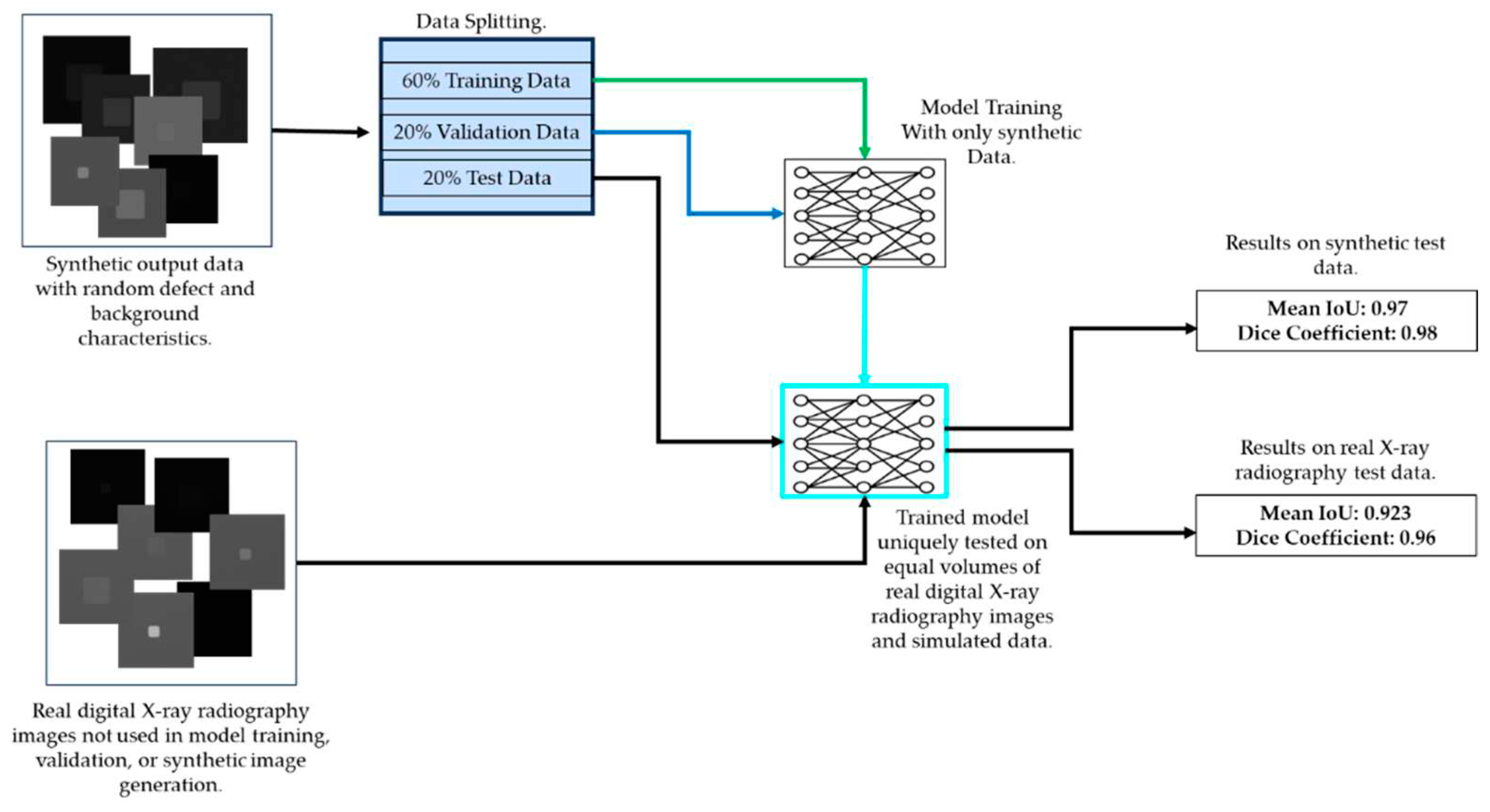
4. Discussion
5. Conclusions and Future Work
Author Contributions
Funding
Data Availability Statement
Acknowledgments
Conflicts of Interest
Appendix A
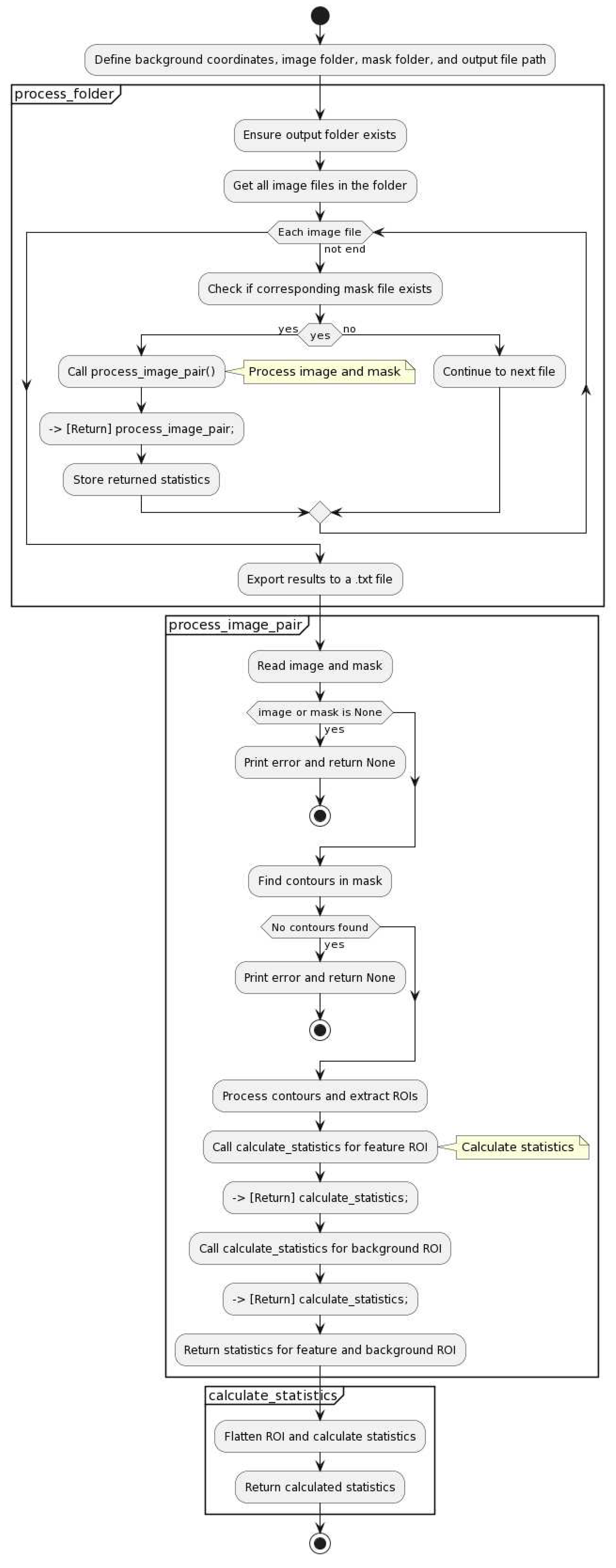
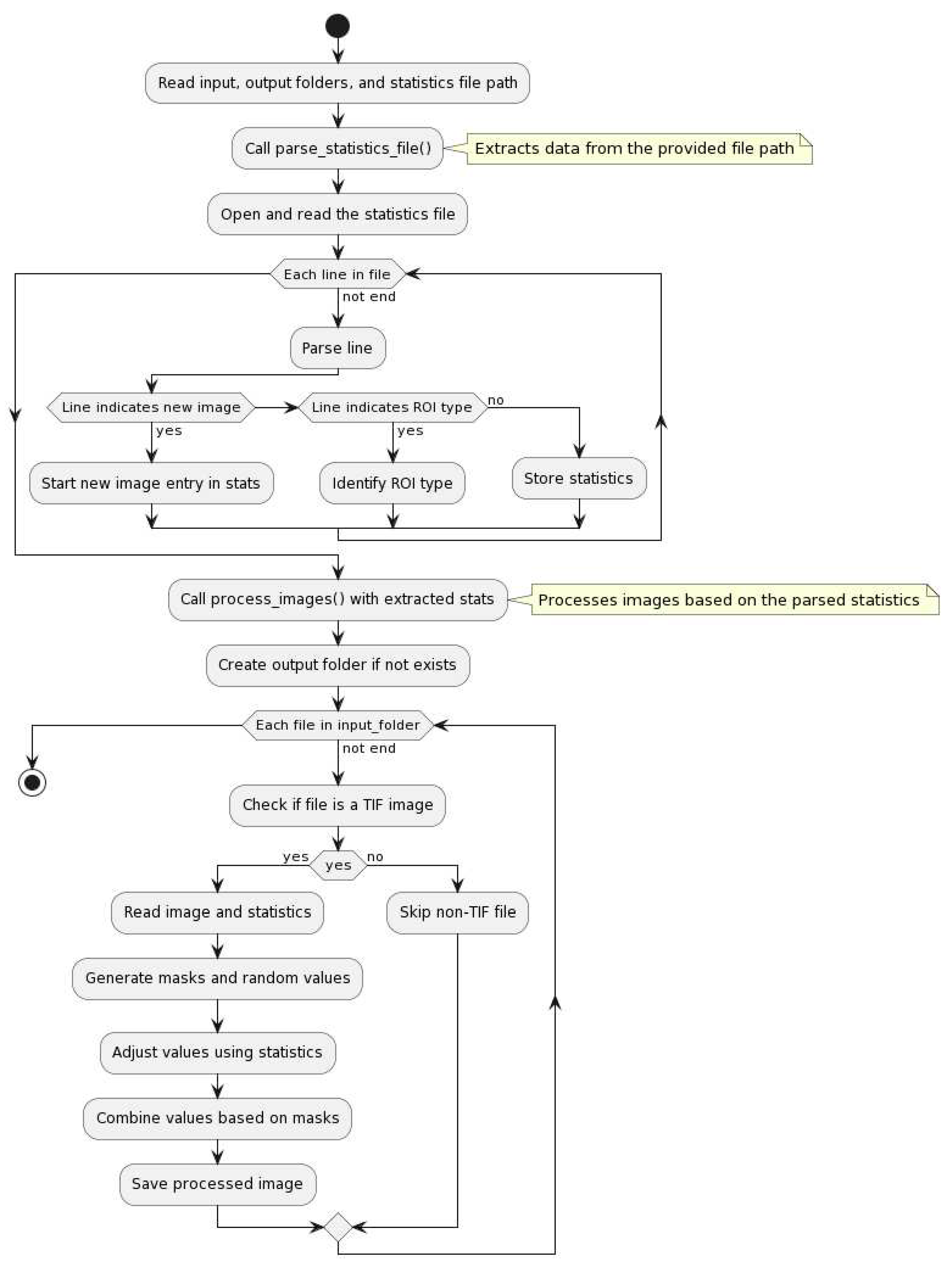
References
- Chen, Z.-H.; Juang, J.-C. YOLOv4 Object Detection Model for Nondestructive Radiographic Testing in Aviation Maintenance Tasks. AIAA Journal 2021, 1–6. [Google Scholar] [CrossRef]
- University of West Attica; Misokefalou, Dr.E.; Papoutsidakis, Prof.M.; University of West Attica; Priniotakis, Prof.G.; University of West Attica NON-DESTRUCTIVE TESTING FOR QUALITY CONTROL IN AUTOMOTIVE INDUSTRY. IJEAST 2022, 7, 349–355. [CrossRef]
- Parlak, İ.E.; Emel, E. Deep Learning-Based Detection of Aluminum Casting Defects and Their Types. Engineering Applications of Artificial Intelligence 2023, 118, 105636. [Google Scholar] [CrossRef]
- Beránek, L.; Kroisová, D.; Dvořáčková, Š.; Urban, J.; Šimota, J.; Andronov, V.; Bureš, L.; Pelikán, L. Use of Computed Tomography in Dimensional Quality Control and NDT. Manufacturing Technology 2020, 20, 566–575. [Google Scholar] [CrossRef]
- Baur, M.; Uhlmann, N.; Pöschel, T.; Schröter, M. Correction of Beam Hardening in X-Ray Radiograms. Review of Scientific Instruments 2019, 90, 025108. [Google Scholar] [CrossRef] [PubMed]
- Aral, N.; Amor Duch, M.; Banu Nergis, F.; Candan, C. The Effect of Tungsten Particle Sizes on X-Ray Attenuation Properties. Radiation Physics and Chemistry 2021, 187, 109586. [Google Scholar] [CrossRef]
- Ou, X.; Chen, X.; Xu, X.; Xie, L.; Chen, X.; Hong, Z.; Bai, H.; Liu, X.; Chen, Q.; Li, L.; et al. Recent Development in X-Ray Imaging Technology: Future and Challenges. Research 2021, 2021, 2021/9892152. [Google Scholar] [CrossRef]
- Say, D.; Zidi, S.; Qaisar, S.M.; Krichen, M. Automated Categorization of Multiclass Welding Defects Using the X-Ray Image Augmentation and Convolutional Neural Network. Sensors 2023, 23, 6422. [Google Scholar] [CrossRef]
- Standard Terminology for Nondestructive Examinations. Available online: https://www.astm.org/e1316-17a.html (accessed on 5 December 2023).
- Luo, A.A.; Sachdev, A.K.; Apelian, D. Alloy Development and Process Innovations for Light Metals Casting. Journal of Materials Processing Technology 2022, 306, 117606. [Google Scholar] [CrossRef]
- Mazzei, D.; Ramjattan, R. Machine Learning for Industry 4.0: A Systematic Review Using Deep Learning-Based Topic Modelling. Sensors 2022, 22, 8641. [Google Scholar] [CrossRef]
- Lindgren, E.; Zach, C. Industrial X-Ray Image Analysis with Deep Neural Networks Robust to Unexpected Input Data. Metals 2022, 12, 1963. [Google Scholar] [CrossRef]
- García Pérez, A.; Gómez Silva, M.J.; De La Escalera Hueso, A. Automated Defect Recognition of Castings Defects Using Neural Networks. J Nondestruct Eval 2022, 41, 11. [Google Scholar] [CrossRef]
- Tyystjärvi, T.; Virkkunen, I.; Fridolf, P.; Rosell, A.; Barsoum, Z. Automated Defect Detection in Digital Radiography of Aerospace Welds Using Deep Learning. Weld World 2022, 66, 643–671. [Google Scholar] [CrossRef]
- Gabelica, M.; Bojčić, R.; Puljak, L. Many Researchers Were Not Compliant with Their Published Data Sharing Statement: A Mixed-Methods Study. Journal of Clinical Epidemiology 2022, 150, 33–41. [Google Scholar] [CrossRef]
- Lindgren and Zach - 2022 - Industrial X-Ray Image Analysis with Deep Neural N.Pdf.
- Jiangsha, A.; Tian, L.; Bai, L.; Zhang, J. Data Augmentation by a CycleGAN-Based Extra-Supervised Model for Nondestructive Testing. Meas. Sci. Technol. 2022, 33, 045017. [Google Scholar] [CrossRef]
- Bellon, C.; Deresch, A.; Gollwitzer, C.; Jaenisch, G.-R. Radiographic Simulator aRTist: Version 2.
- Giersch, J.; Durst, J. Monte Carlo Simulations in X-Ray Imaging. Nuclear Instruments and Methods in Physics Research Section A: Accelerators, Spectrometers, Detectors and Associated Equipment 2008, 591, 300–305. [Google Scholar] [CrossRef]
- Ivanovs, M.; Ozols, K.; Dobrajs, A.; Kadikis, R. Improving Semantic Segmentation of Urban Scenes for Self-Driving Cars with Synthetic Images. Sensors 2022, 22, 2252. [Google Scholar] [CrossRef]
- Kortylewski, A.; Schneider, A.; Gerig, T.; Egger, B.; Morel-Forster, A.; Vetter, T. Training Deep Face Recognition Systems with Synthetic Data 2018.
- Penekalapati, S.V.; Ramana, E.V.; Kumar, N.K. Automatic Detection of Sub-Surface Weld Defects Using Machine Learning Approach. In Proceedings of the 2022 International Conference on Recent Trends in Microelectronics, Automation, Computing and Communications Systems (ICMACC); IEEE: Hyderabad, India, December 28, 2022; pp. 412–415. [Google Scholar]
- Bosse, S.; Lehmhus, D. Automated Detection of Hidden Damages and Impurities in Aluminum Die Casting Materials and Fibre-Metal Laminates Using Low-Quality X-Ray Radiography, Synthetic X-Ray Data Augmentation by Simulation, and Machine Learning.
- Bosse, S. Automated Damage and Defect Detection with Low-Cost X-Ray Radiography Using Data-Driven Predictor Models and Data Augmentation by X-Ray Simulation. 2023.
- Dong, X.; Taylor, C.J.; Cootes, T.F. Automatic Aerospace Weld Inspection Using Unsupervised Local Deep Feature Learning. Knowledge-Based Systems 2021, 221, 106892. [Google Scholar] [CrossRef]
- McCann, M.T.; Guardincerri, E.; Gonzales, S.M.; Misurek, L.A.; Schei, J.L.; Klasky, M.L. Material Identification From Radiographs Without Energy Resolution. IEEE Trans. Comput. Imaging 2023, 9, 314–326. [Google Scholar] [CrossRef]
- Kumar, A.; Arnold, W. High Resolution in Non-Destructive Testing: A Review. Journal of Applied Physics 2022, 132, 100901. [Google Scholar] [CrossRef]
- Kusk, M.W.; Jensen, J.M.; Gram, E.H.; Nielsen, J.; Precht, H. Anode Heel Effect: Does It Impact Image Quality in Digital Radiography? A Systematic Literature Review. Radiography 2021, 27, 976–981. [Google Scholar] [CrossRef]
- Standard Practice for Manufacturing Characterization of Digital Detector Arrays. Available online: https://www.astm.org/e2597_e2597m-22.html (accessed on 5 December 2023).
- Gutiérrez, C.E.; Sabra, A. The Reflector Problem and the Inverse Square Law. Nonlinear Analysis: Theory, Methods & Applications 2014, 96, 109–133. [Google Scholar] [CrossRef]
- Xiao, Z.; Song, K.-Y.; Gupta, M.M. Development of a CNN Edge Detection Model of Noised X-Ray Images for Enhanced Performance of Non-Destructive Testing. Measurement 2021, 174, 109012. [Google Scholar] [CrossRef]
- 32. In Principles and Practice of Image-Guided Abdominal Radiation Therapy; Kuang, Y., Ed.; IOP Publishing, 2023; ISBN 978-0-7503-2468-7. [Google Scholar]
- Schneider, C.A.; Rasband, W.S.; Eliceiri, K.W. NIH Image to ImageJ: 25 Years of Image Analysis. Nat Methods 2012, 9, 671–675. [Google Scholar] [CrossRef] [PubMed]
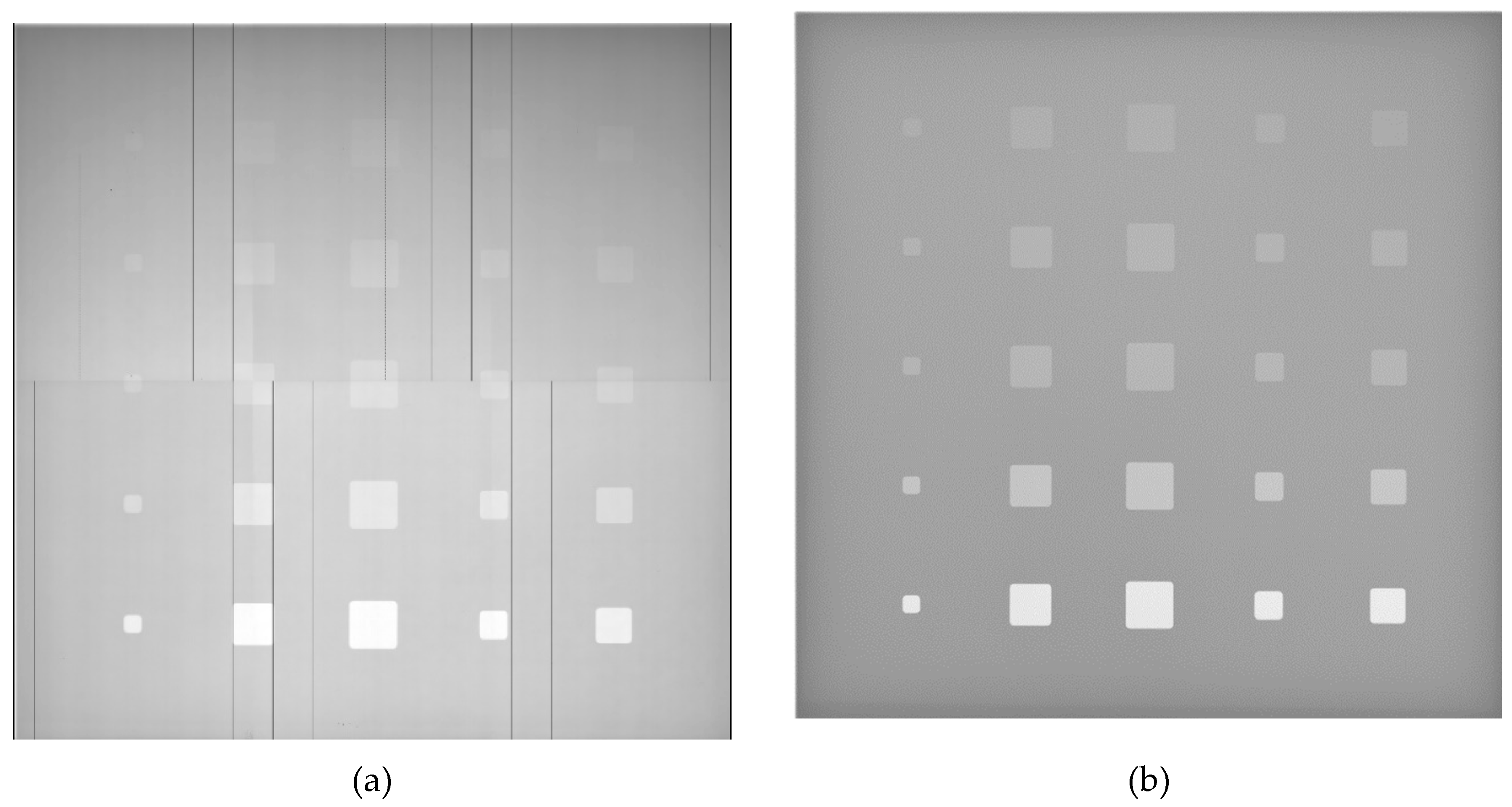
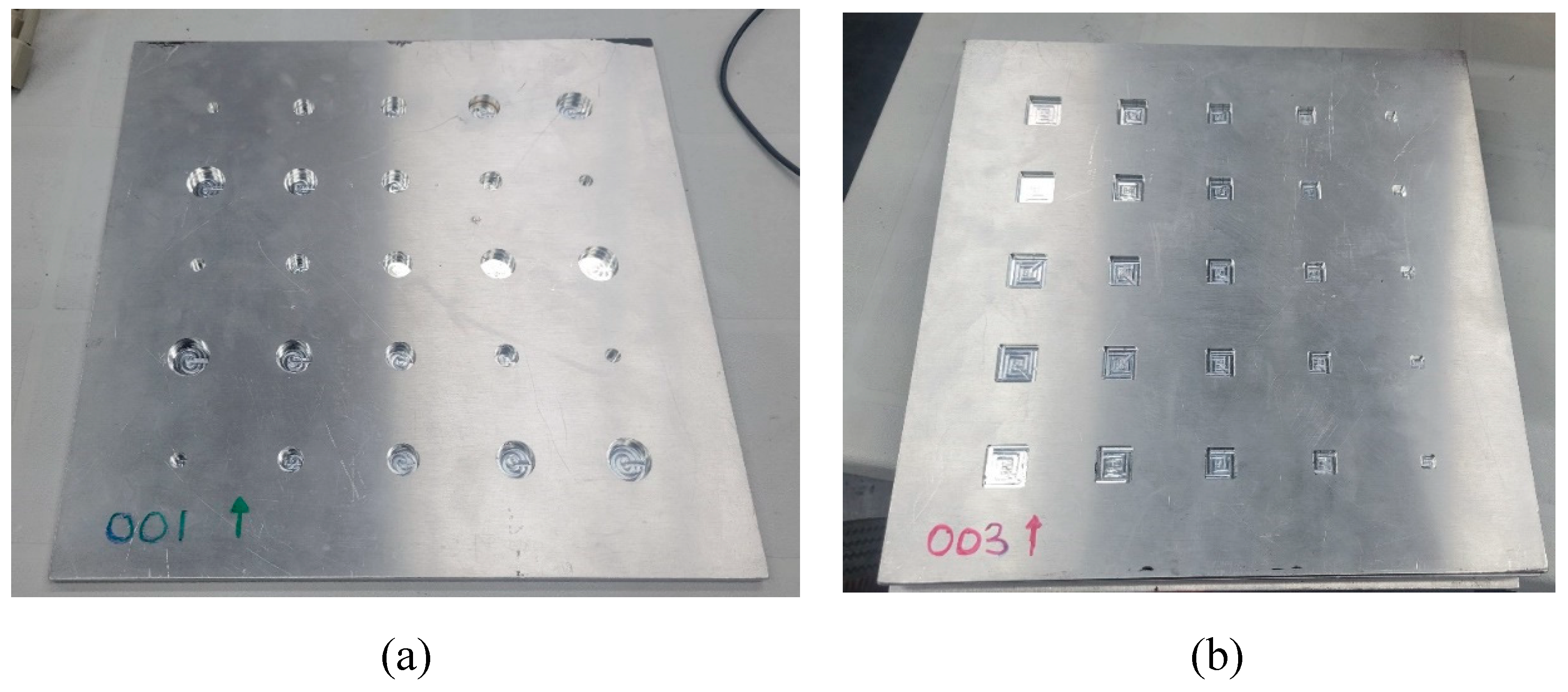
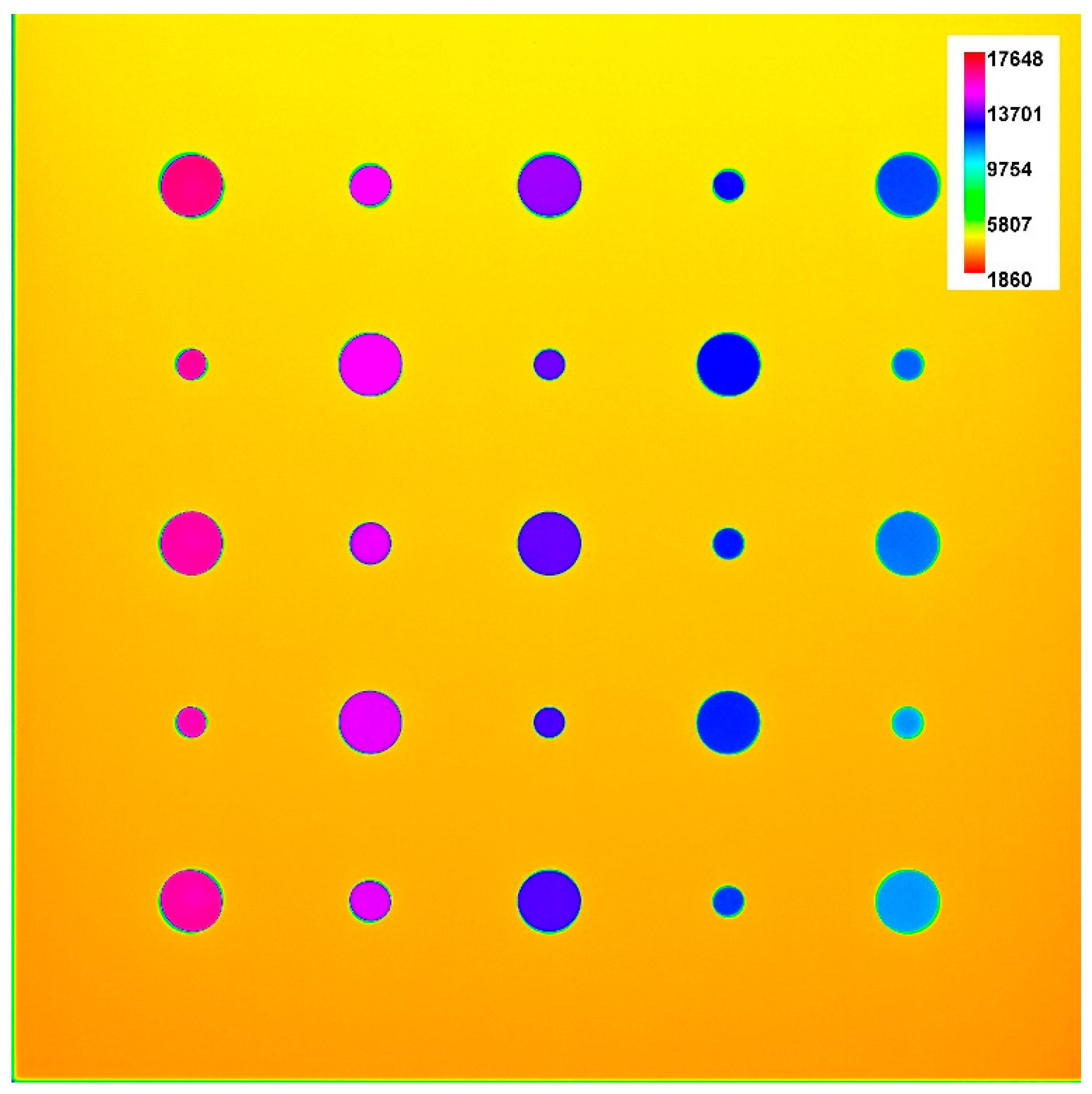
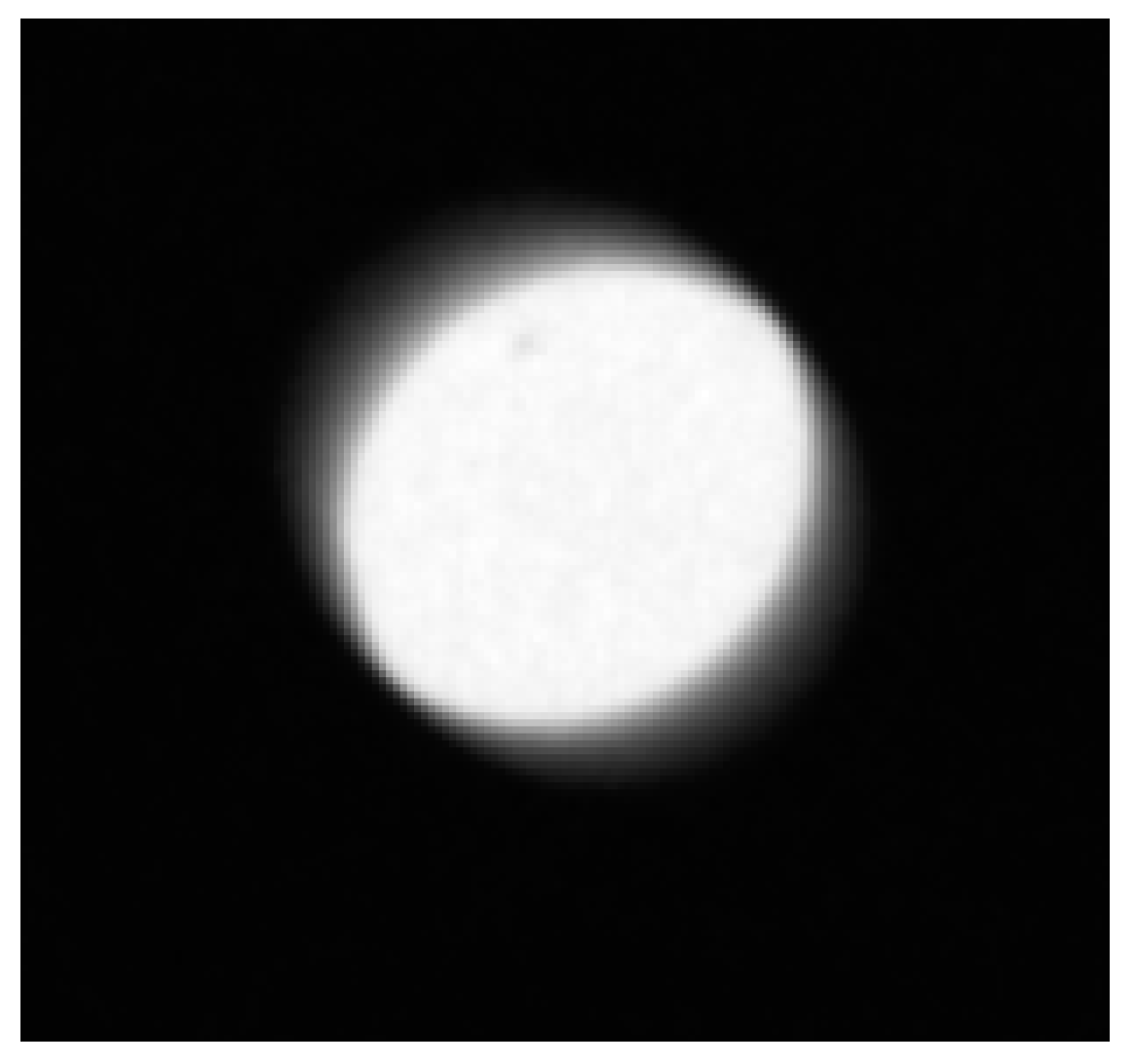
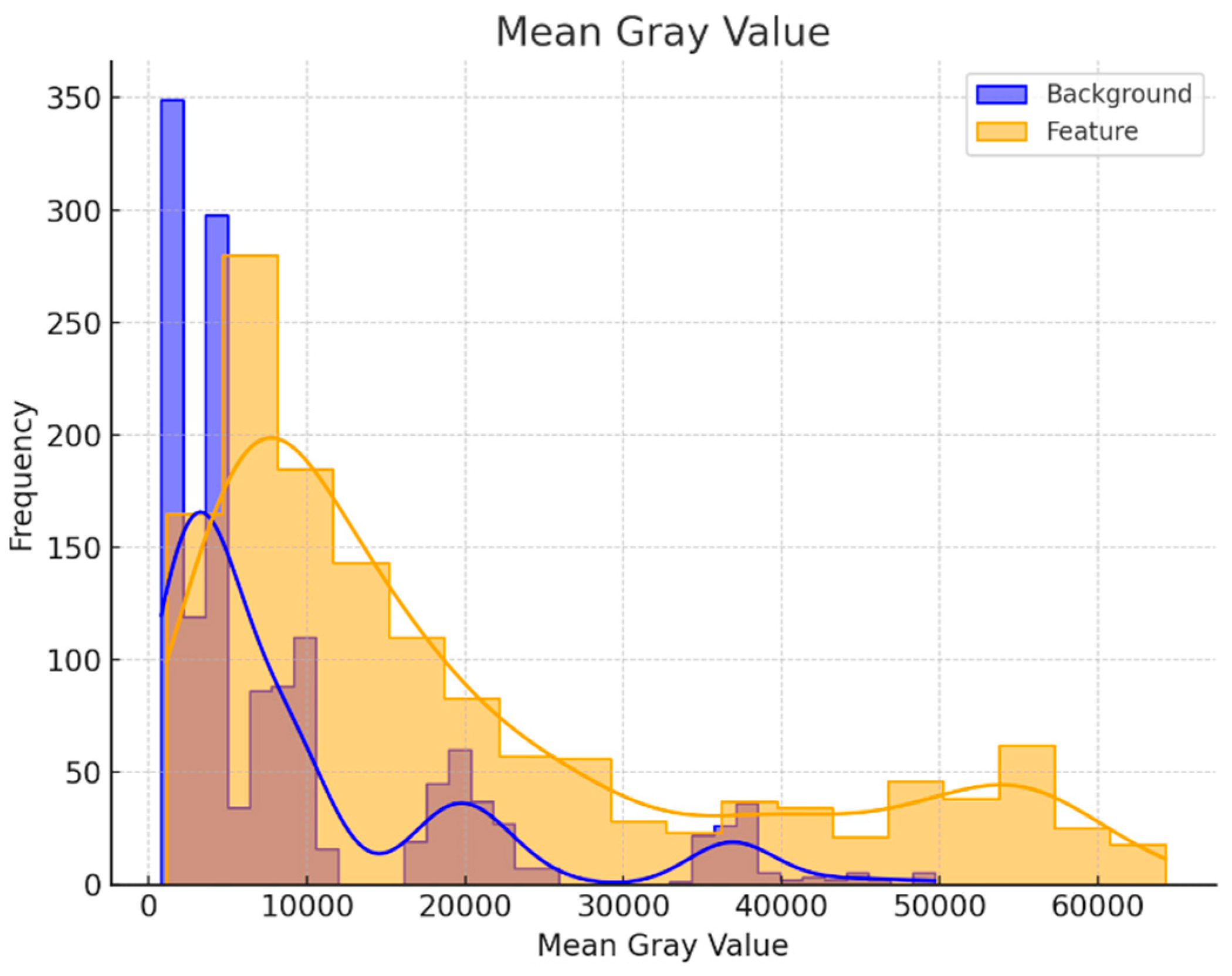
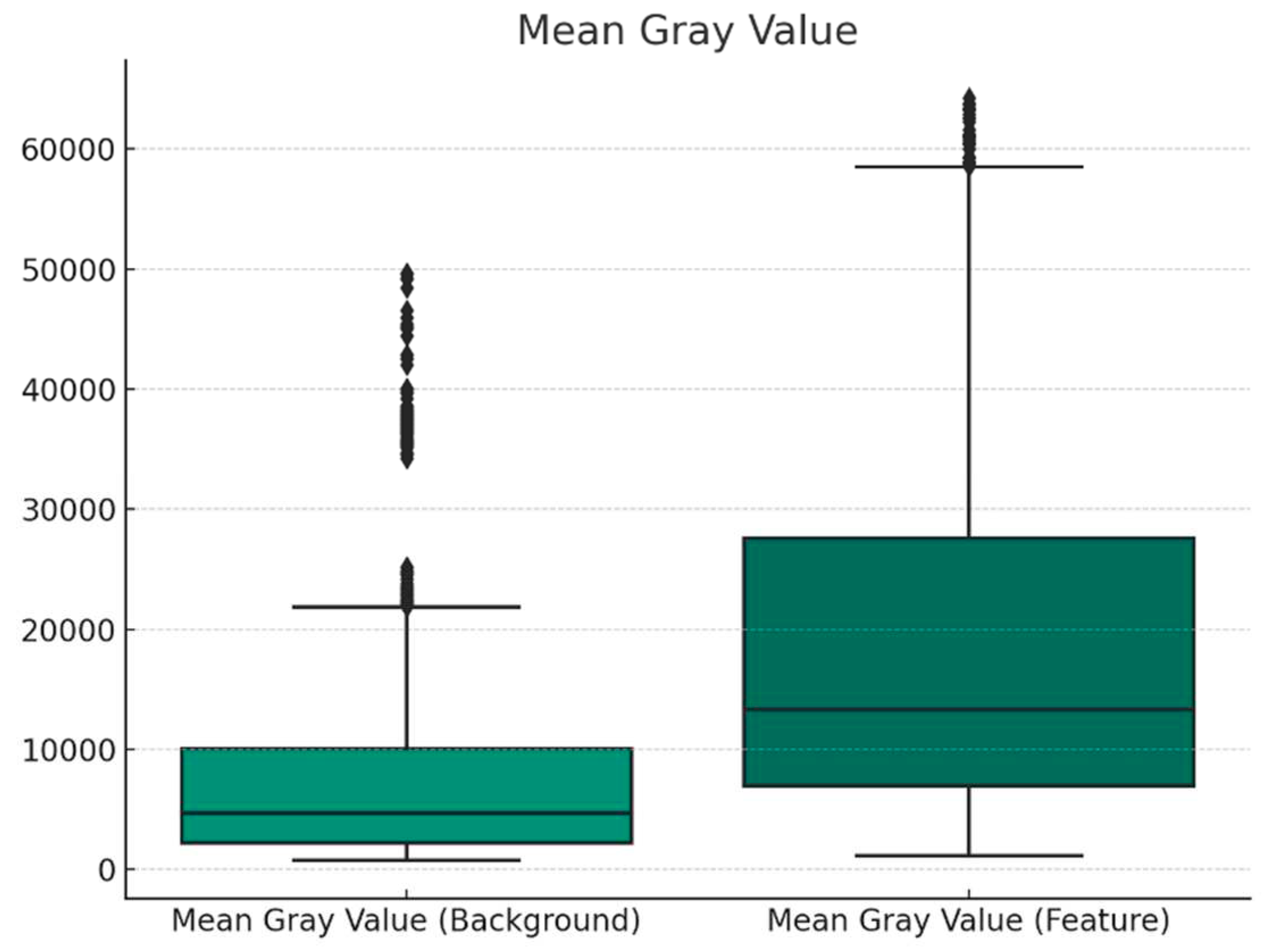
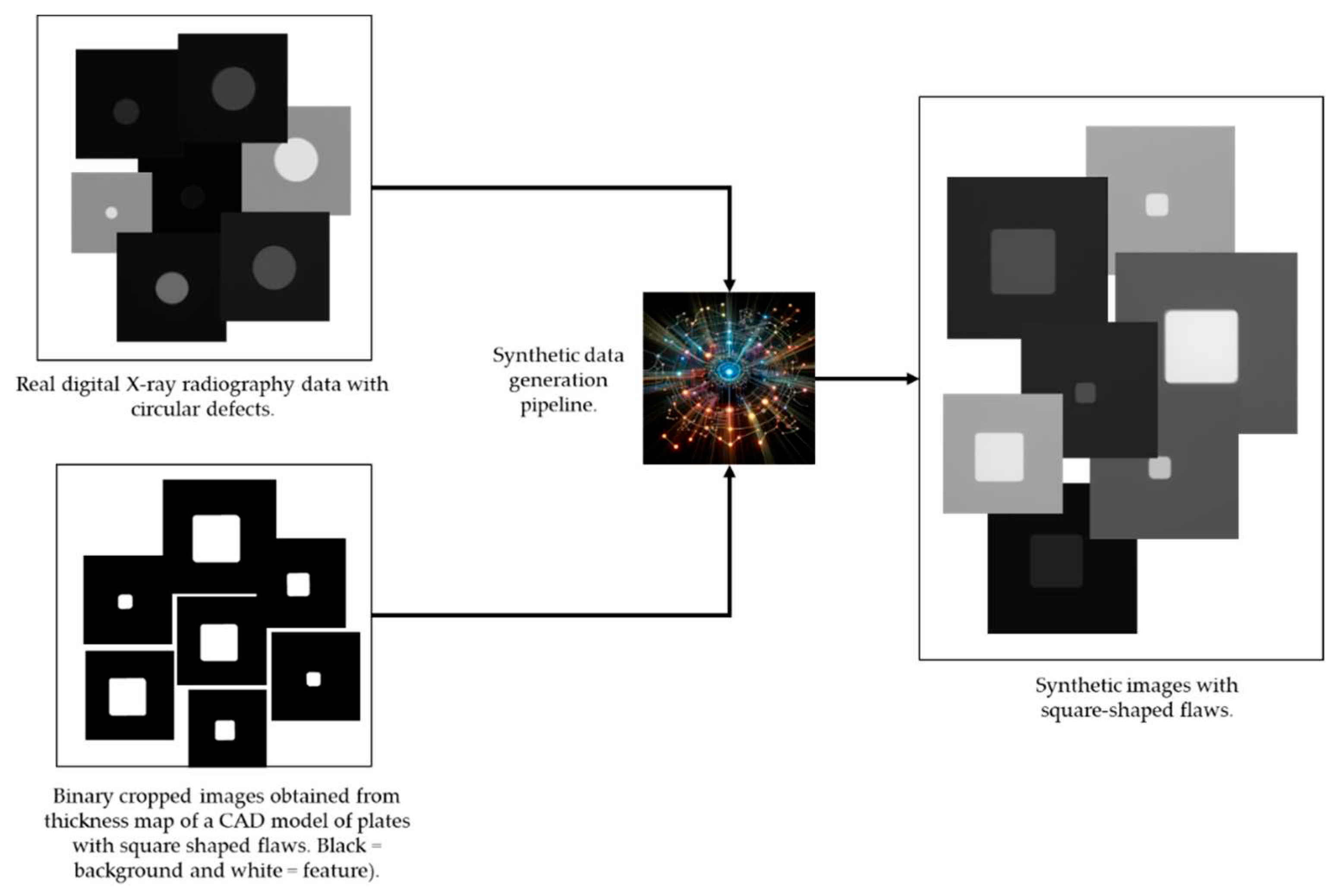
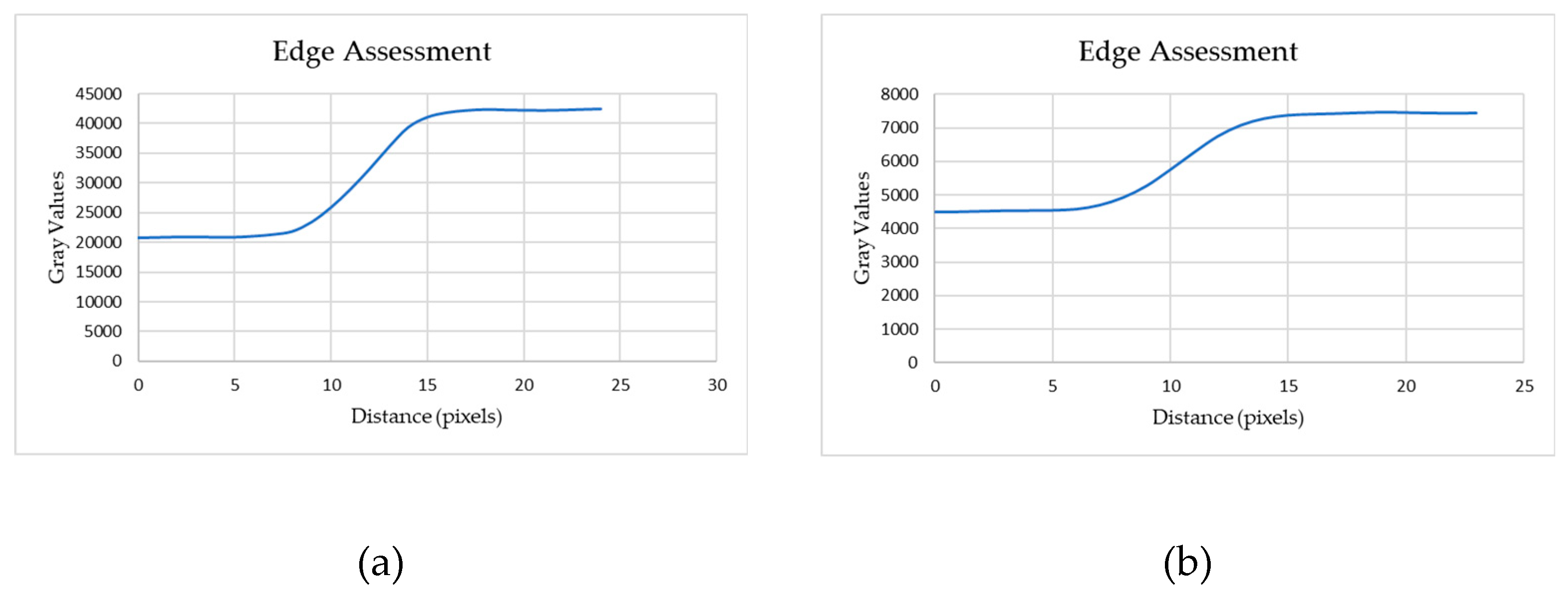
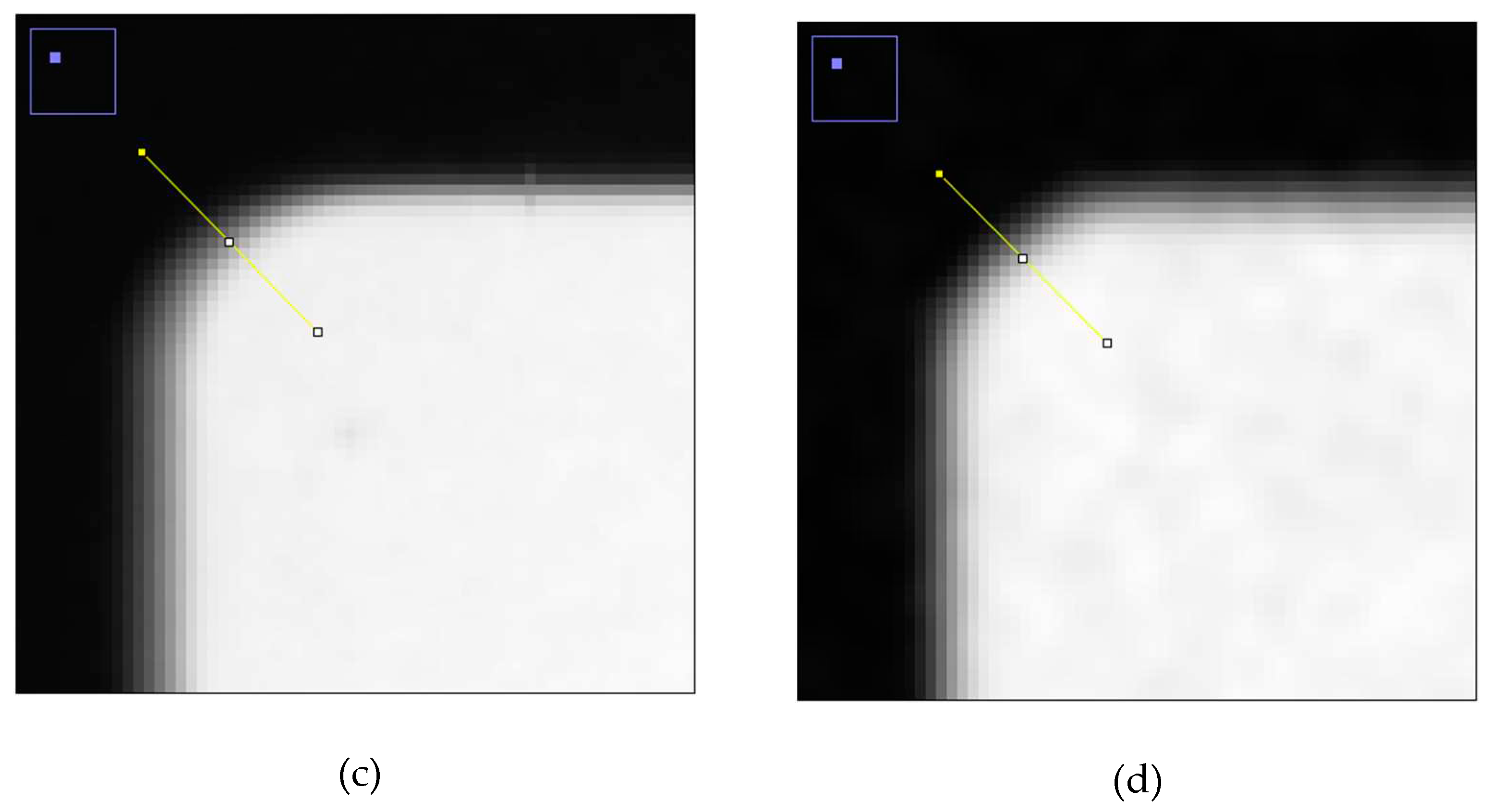
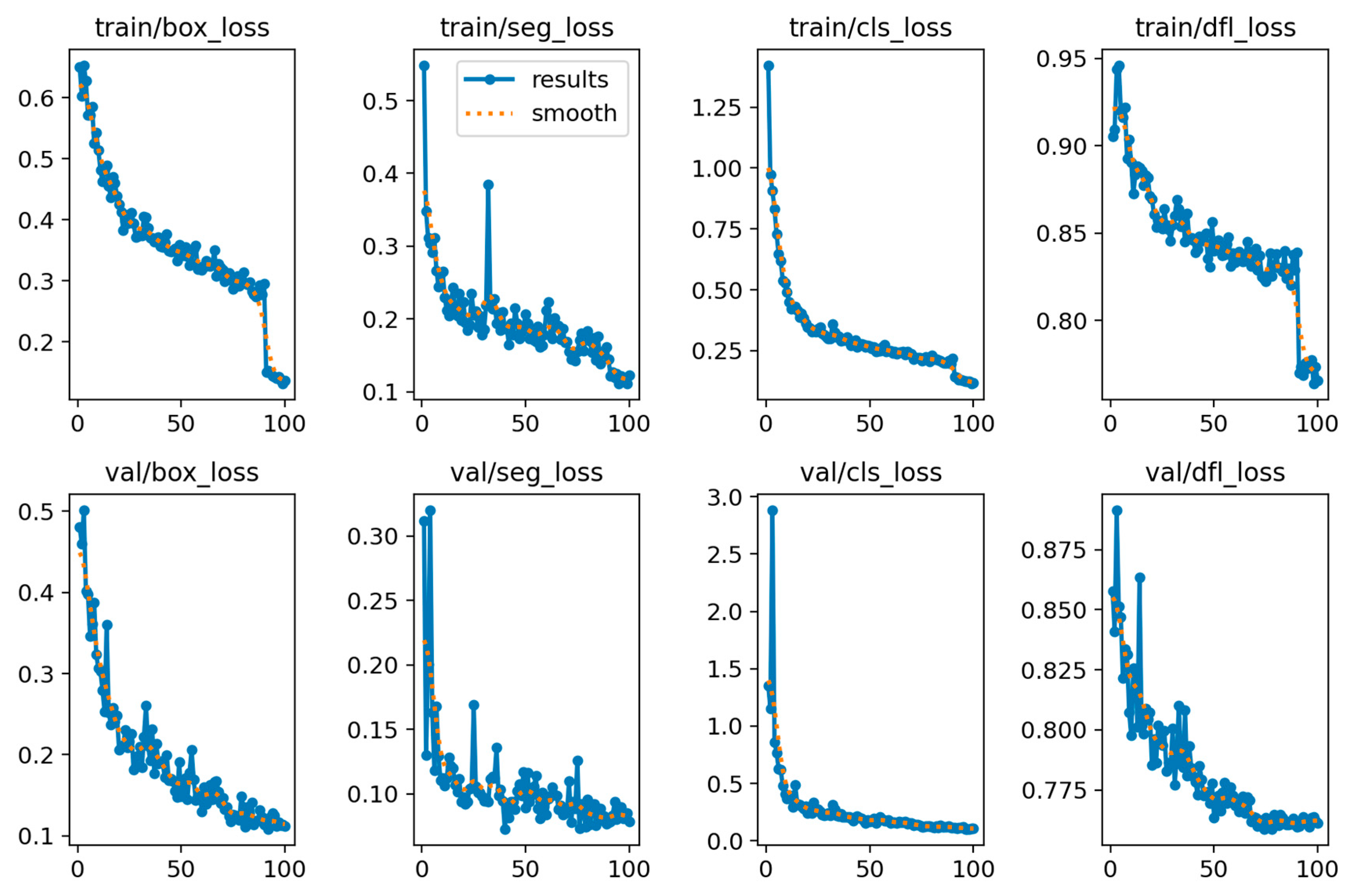
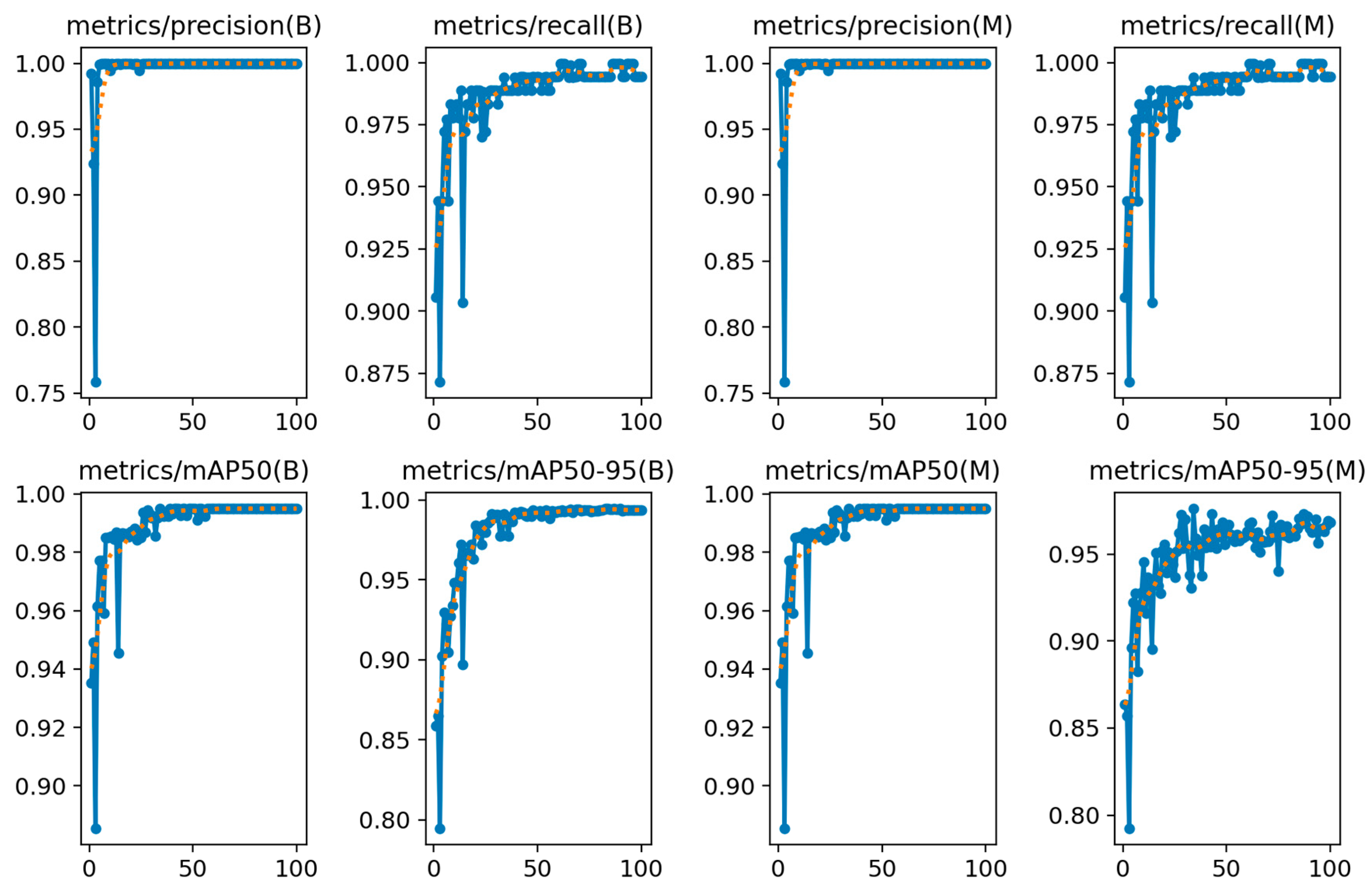
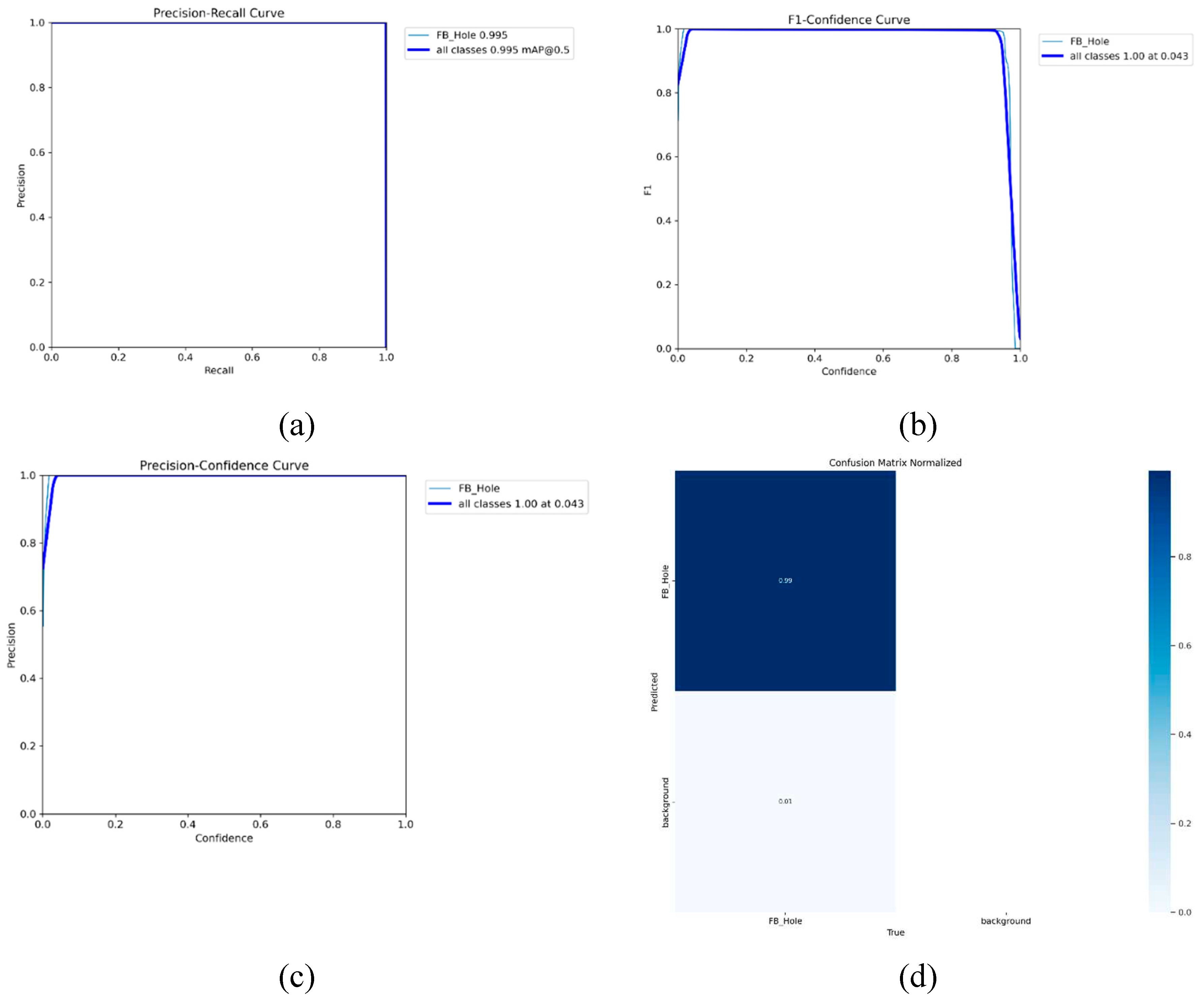
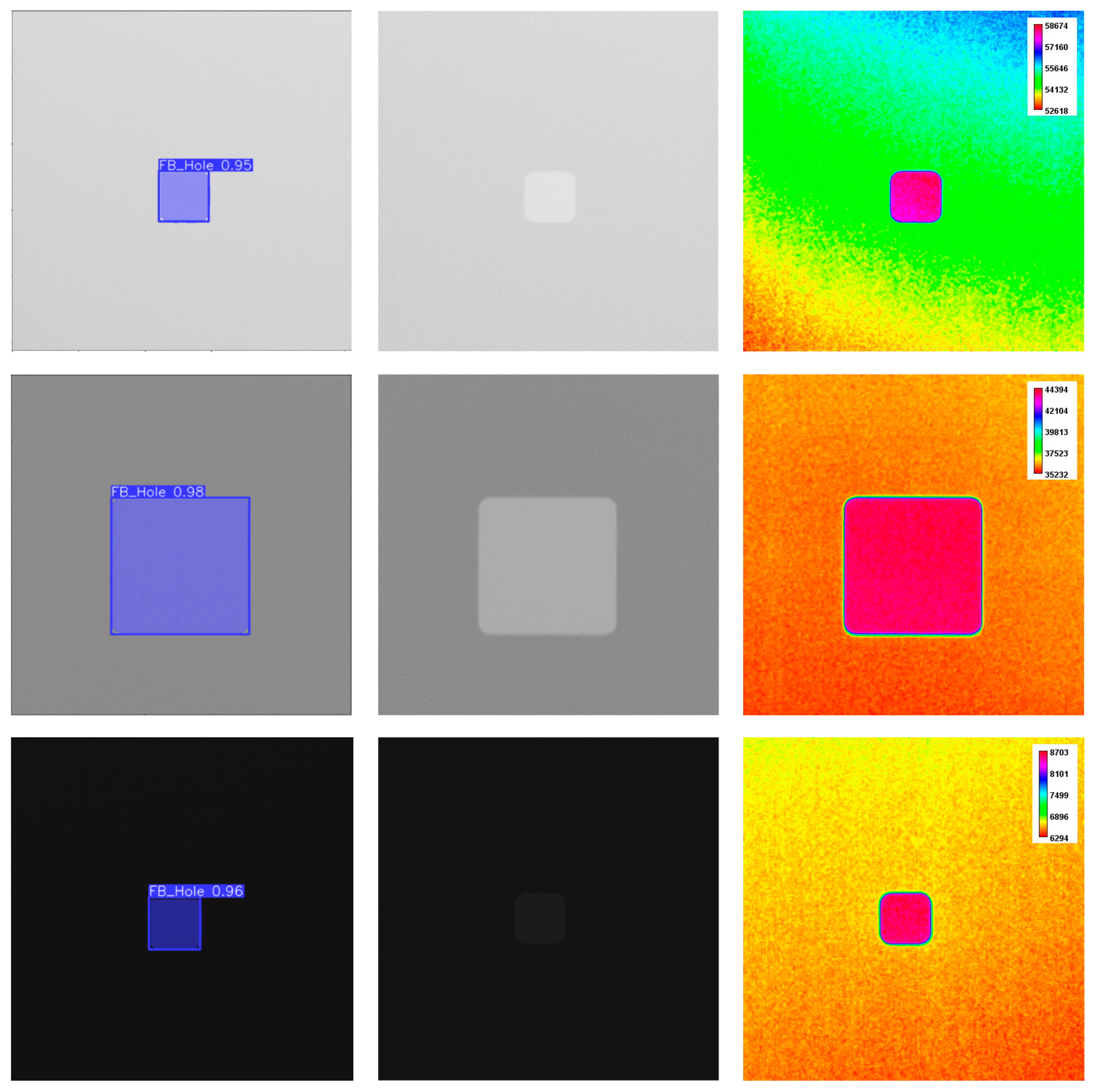
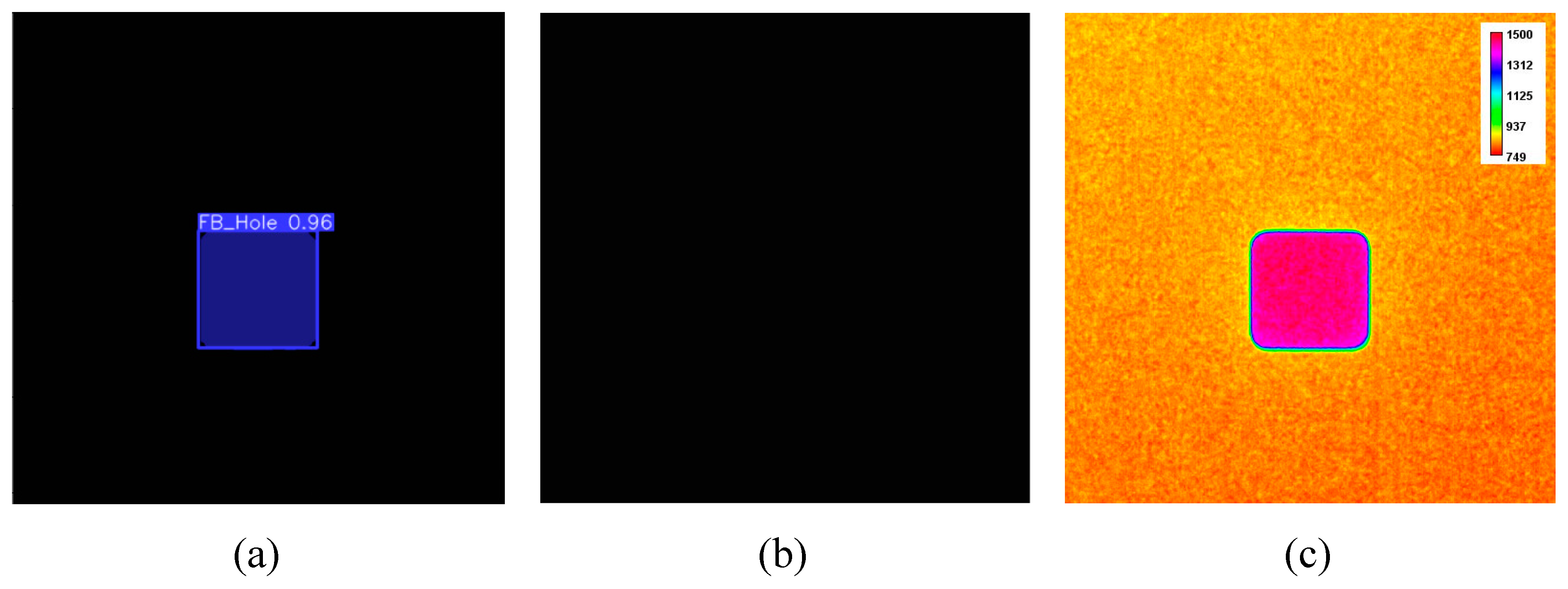
| SN | Kilovoltage (kV) | Amperage (A) | Time (s) |
|---|---|---|---|
| 1 | 50kV | 100µA | 0.2 |
| 2 | 50kV | 100µA | 0.5 |
| 3 | 50kV | 200µA | 0.2 |
| 4 | 50kV | 200µA | 0.5 |
| 5 | 50kV | 450µA | 1 |
| 6 | 60kV | 100µA | 0.2 |
| 7 | 60kV | 100µA | 0.5 |
| 8 | 60kV | 200µA | 0.2 |
| 9 | 60kV | 200µA | 0.5 |
| 10 | 60kV | 400µA | 0.5 |
| 11 | 60kV | 450µA | 0.5 |
| 12 | 60kV | 450µA | 1 |
| 13 | 70kV | 100µA | 0.2 |
| 14 | 70kV | 100µA | 0.5 |
| 15 | 70kV | 200µA | 0.2 |
| 16 | 70kV | 200µA | 0.5 |
| 17 | 70kV | 400µA | 0.5 |
| 18 | 70kV | 450µA | 0.5 |
| 19 | 75kV | 450µA | 0.5 |
| 20 | 150kV | 50µA | 0.5 |
Disclaimer/Publisher’s Note: The statements, opinions and data contained in all publications are solely those of the individual author(s) and contributor(s) and not of MDPI and/or the editor(s). MDPI and/or the editor(s) disclaim responsibility for any injury to people or property resulting from any ideas, methods, instructions or products referred to in the content. |
© 2023 by the authors. Licensee MDPI, Basel, Switzerland. This article is an open access article distributed under the terms and conditions of the Creative Commons Attribution (CC BY) license (https://creativecommons.org/licenses/by/4.0/).





